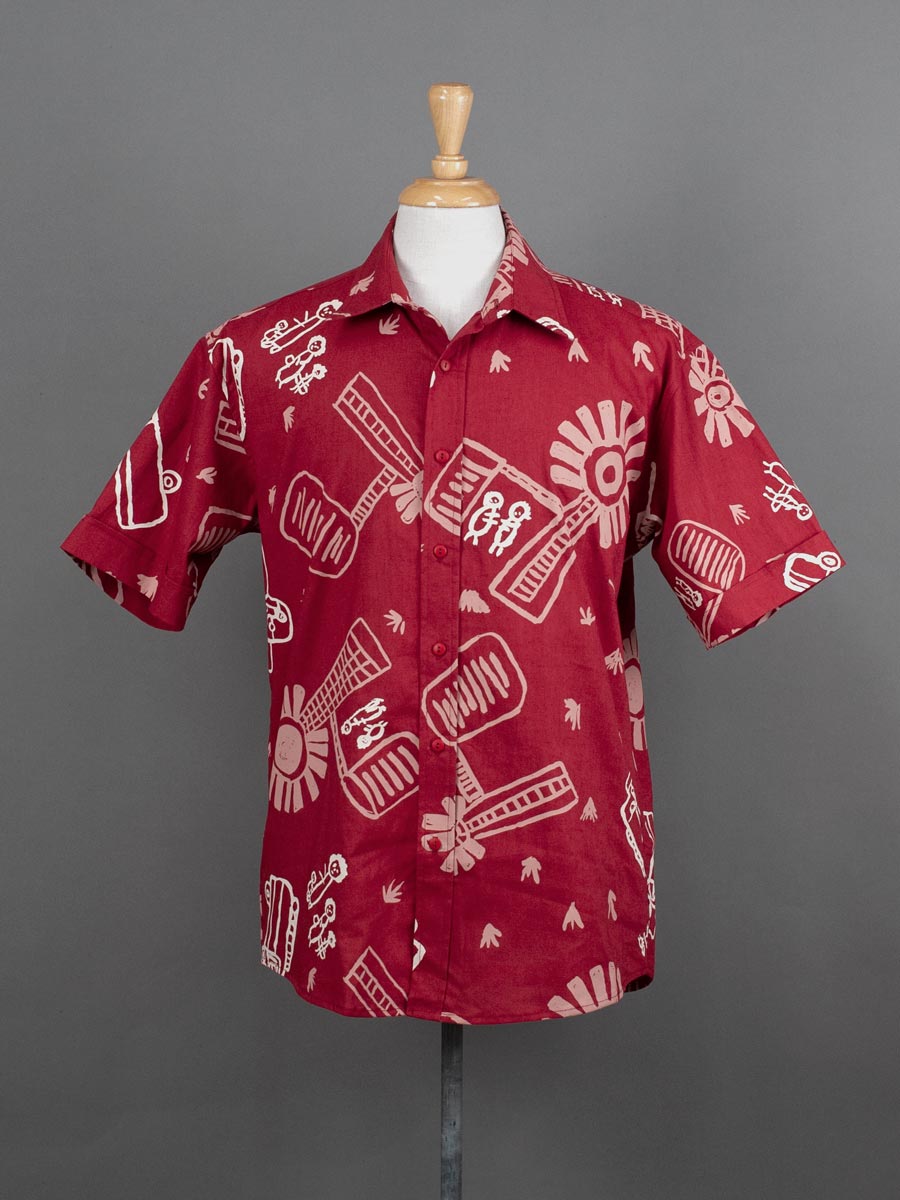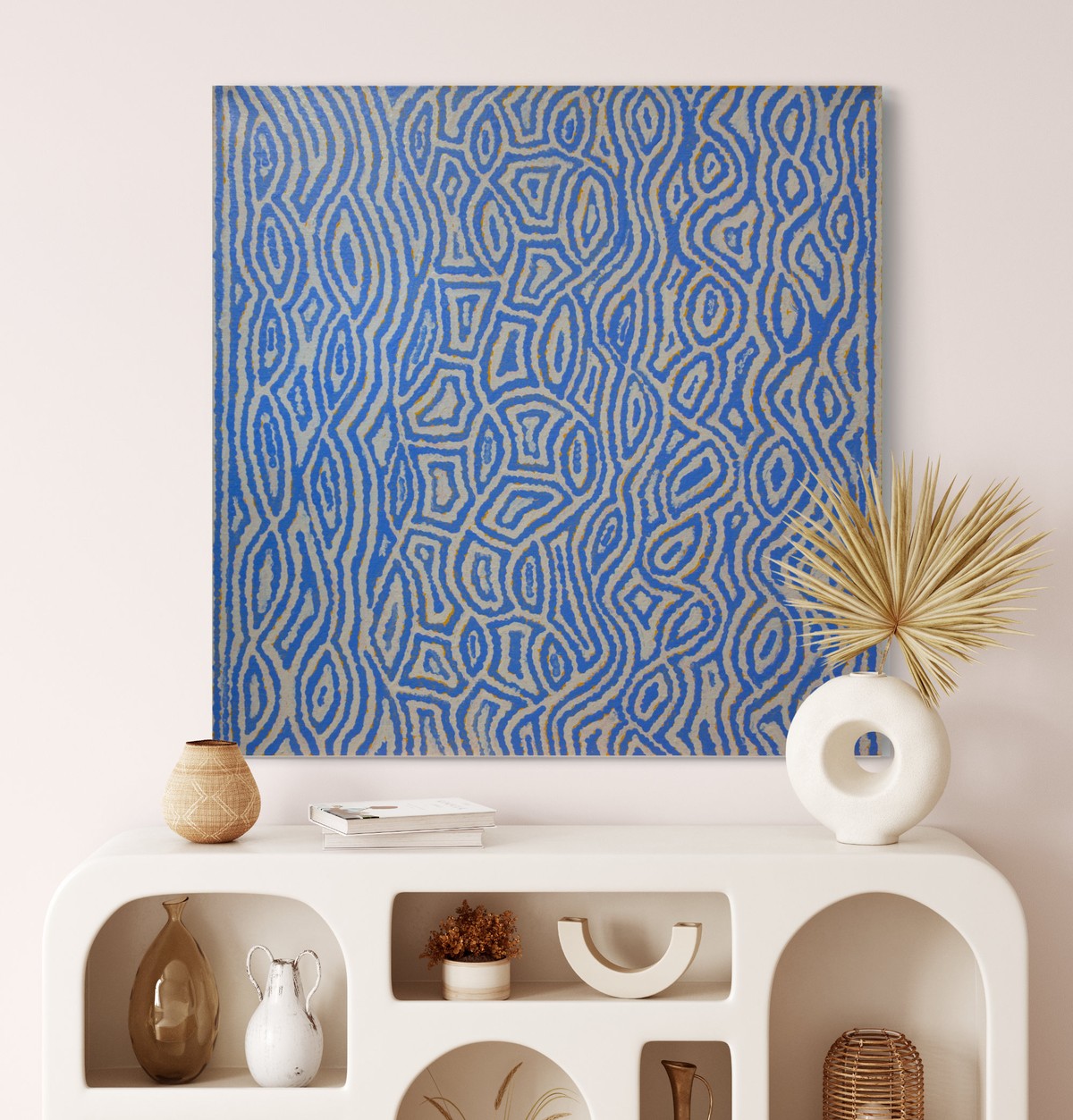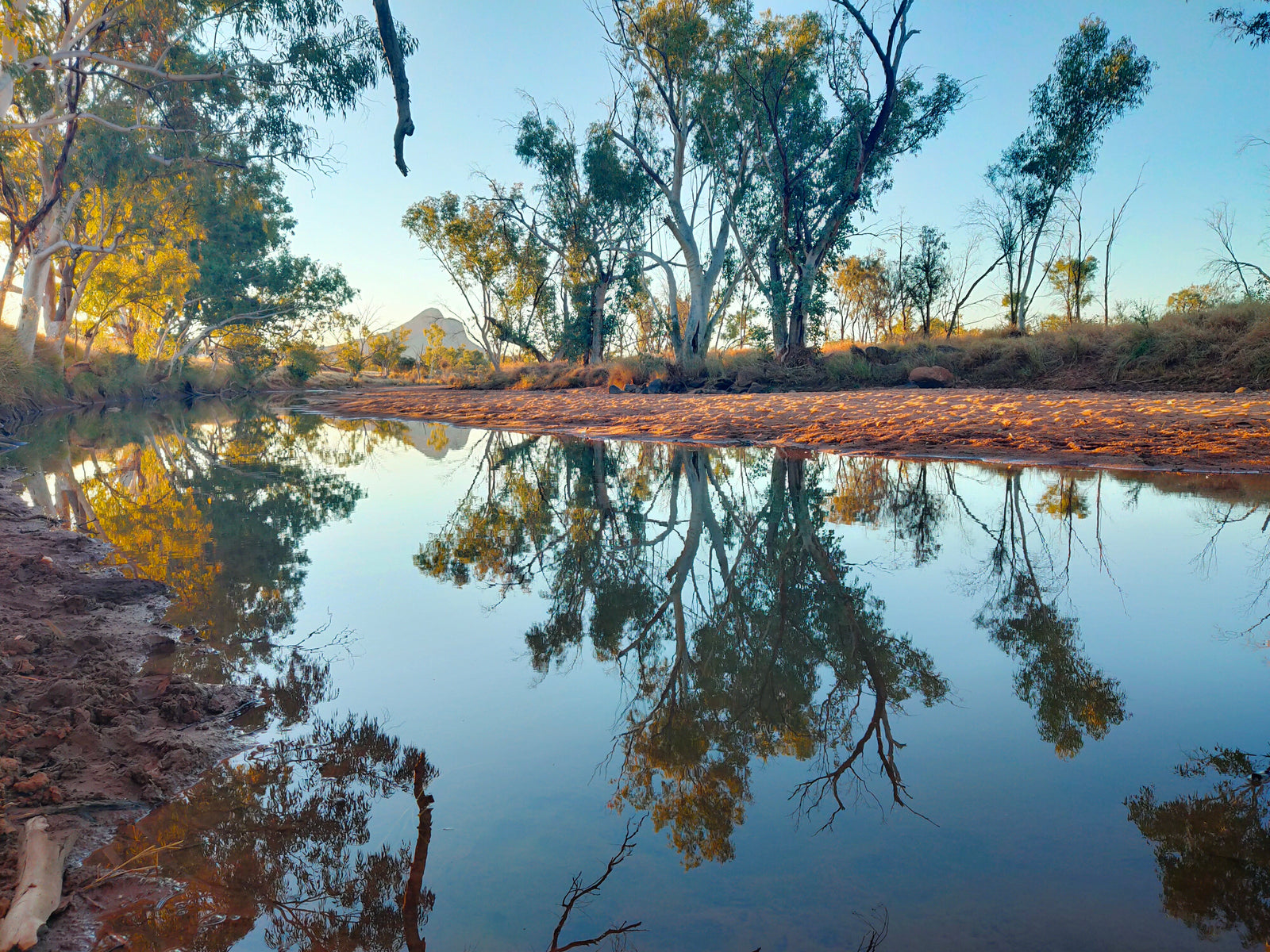"My grandmother Ngatawina Ruby Nangala she's the nangala her mother Napangati, my Great Great grandmother. Her mother, Napangati, she came from Putulu, Mount Theo. That's where my grandmother's mother's home Country is, that's where she belongs. I decided to do a painting about my ancestors. It's for me to show my connection, where I come from. I did this painting with bush foods that a long time ago ancestors who were there living, walking, travelling, they would collect these bush foods. This is where the bush food is. When the new generation open their eyes, they can see the food is always there. When you see this painting that I done, the red is the outback desert that you can see when you're traveling. Around it is the bush tucker. The big tree with the dots is the bush grapes. On the side the round shapes circled with dots is pura, it's like a heart shaped with black seeds inside, it tastes like rockmelon. In my language Luritja it's called pura. Next to that the wavy shapes are the outside of bush beans, Pangkuna. Pangkuna you have to cook in the fire first before you eat it. As you can see there's the oval shapes with the leaves too, that's ipalu, bush banana. There's two ways of eating it, from the tree and cooking it in warm ashes. The heart shaped leaves on the sides with the green and white dots are the bush blueberry, yawalyurru. The purple circles, curly, are bush coconut, wanpanpi. They are in the top of that tree with the gum nuts, its got seeds that you can make into a necklace. When people pass away they use those leaves and branches to walk into the place where the person used to be and give respect, feeling the empathy. The tree is important. It's special because people can use it. On the side of the painting the yellow and red is kalinykalinypa, bush grevillia. When ancestors travel on a very hot day they used to see one of these and tap it on their mouths, suck and chew it to feel refreshed. This is how it used to be when there was no cars. Only a donkey and a camel that people used to travel on. Then, the pink shapes are called katjuterri. You can only find those katjuterri in the creek, near a waterhole. When they used to go swimming in a waterhole they would collect those katjuterri. It's like a small sweet potato. You can cook it in ashes. That's how they have been using these ones. The almond shapes, with the long leaves is the yalka, bush onion. It's like a real onion but really small, like a peanut. You can find them near the lake, that's where they can grow. " - Joyce Dixon
"My grandmother Ngatawina Ruby Nangala she's the nangala her mother Napangati, my Great Great grandmother. Her mother, Napangati, she came from Putulu, Mount Theo. That's where my grandmother's mother's home Country is, that's where she belongs. I decided to do a painting about my ancestors. It's for me to show my connection, where I come from. I did this painting with bush foods that a long time ago ancestors who were there living, walking, travelling, they would collect these bush foods. This is where the bush food is. When the new generation open their eyes, they can see the food is always there. When you see this painting that I done, the red is the outback desert that you can see when you're traveling. Around it is the bush tucker. The big tree with the dots is the bush grapes. On the side the round shapes circled with dots is pura, it's like a heart shaped with black seeds inside, it tastes like rockmelon. In my language Luritja it's called pura. Next to that the wavy shapes are the outside of bush beans, Pangkuna. Pangkuna you have to cook in the fire first before you eat it. As you can see there's the oval shapes with the leaves too, that's ipalu, bush banana. There's two ways of eating it, from the tree and cooking it in warm ashes. The heart shaped leaves on the sides with the green and white dots are the bush blueberry, yawalyurru. The purple circles, curly, are bush coconut, wanpanpi. They are in the top of that tree with the gum nuts, its got seeds that you can make into a necklace. When people pass away they use those leaves and branches to walk into the place where the person used to be and give respect, feeling the empathy. The tree is important. It's special because people can use it. On the side of the painting the yellow and red is kalinykalinypa, bush grevillia. When ancestors travel on a very hot day they used to see one of these and tap it on their mouths, suck and chew it to feel refreshed. This is how it used to be when there was no cars. Only a donkey and a camel that people used to travel on. Then, the pink shapes are called katjuterri. You can only find those katjuterri in the creek, near a waterhole. When they used to go swimming in a waterhole they would collect those katjuterri. It's like a small sweet potato. You can cook it in ashes. That's how they have been using these ones. The almond shapes, with the long leaves is the yalka, bush onion. It's like a real onion but really small, like a peanut. You can find them near the lake, that's where they can grow. " - Joyce Dixon




